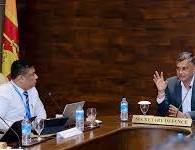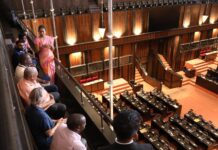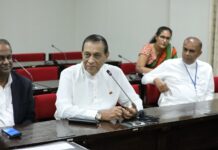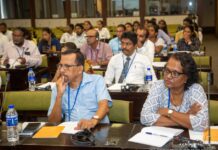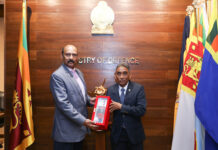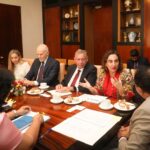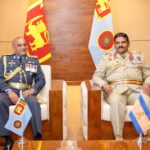Today, 22nd May marks the 52nd anniversary of our beloved nation becoming a republic. In Remembrance of this key event in our history, Ceylon – as Sri Lanka was then known – gained Independence on February 4, 1948. Till then we were a Crown Colony in the British Empire for a little over 150 years after the British took over administering the country from the Dutch in 1796. A Parliamentary system of government based on the British system – generally known as the Westminster model – was introduced just before Independence.
It comprised the House of Representatives (Lower House) with 95 members (known as Members of Parliament) and six appointed by the Governor representing the British monarch, and the Senate (Upper House) with 30-members, 15 of whom were elected by the House of Representatives and the other 15 appointed by the Governor on the advice of the governing party. Twenty four years after Independence the country changed its Constitution and became a Republic on May 22, 1972. It marked the birth of the Socialist Republic of Sri Lanka. That was the day when the official name of the country was changed from ‘Ceylon’ to ‘Sri Lanka’. It should be noted that although the country until then was known as ‘Ceylon’ in English, from ancient times ‘Sri Lankava’ or ‘Lankava’ was the name of the country in Sinhala. Often the term ‘Sri Lankadvipaya’ was used, meaning the ‘Island of Sri Lanka’. With the formation of the Republic, a President took the place of the Governor-General, ceremonial Head of State who was appointed by the British monarch (Queen Elizabeth II) on the recommendation of the Government of Ceylon. The incumbent Governor-General William Gopallawa continued to be the Head of State as the first Non-Executive President under the new constitution. He was a nominee of the Prime Minister and not an elected President. Let us now see how the new Republican constitution was adopted.
The signs of a new constitution started in June 1968 when the main Opposition parties in Parliament – the Sri Lanka Freedom Party (SLFP), the Lanka Sama Samaja Party (LSSP) and the Communist Party (CP) – formed a ‘United Front’ and agreed to establish “a socialist democracy”. The United Front won the general election held on May 27, 1970 and a government was formed with Mrs. Sirimavo Bandaranaike as Prime Minister. The government decided to draft a new constitution and on a resolution by the Prime Minister, the members of the House of Representatives formed themselves into a Constituent Assembly at a meeting held at the Navarangahala in Colombo on July 19, 1970. The Speaker, Stanley Tillekeratne was elected as Chairman. Minister of Plantation Industry, Dr. Colvin R. de Silva was given the additional portfolio of Constitutional Affairs. On a decision made by the Government, the Senate was abolished in October 1971. The bicameral legislature (two law-making institutions) became a unicameral (single law-making body) thereafter. On May 22, 1972, after prolonged discussions, a new Republican Constitution – the Socialist Republic of Sri Lanka – was adopted. A ‘National State Assembly’ (NSA) was created in place of the House of Representatives. The same elected members at the 1970 general election continued as members of the NSA.
Executive President When the United National Party (UNP) won the general election in May 1977 under the leadership of J. R. Jayewardene the government took steps to amend the 1972 Constitution and establish the post of Executive President. The new constitution drawn up by a Select Committee of the National State Assembly was adopted and the ‘Sri Lanka Democratic Socialist Republic’ was promulgated on September 7, 1978, repealing and replacing the 1972 Constitution. The Executive President wielded wide powers. The Executive President was to be elected by the people once every six years and he/she could call for a mandate from the people any time after four years in office. Prime Minister J. R. Jayewardene was installed as the first elected President on February 4, 1978 at a ceremony at Galle Face when he was sworn in before the Chief Justice, Neville Samarakoon. R. (Ranasinghe) Premadasa, Minister and Colombo Central MP was appointed Prime Minister. The National State Assembly was replaced by the ‘Parliament’. There were 168 elected Members of Parliament following the increase in the number of electorates.

Ceylon Becomes the Socialist Republic of Sri Lanka
Source: https://www.nytimes.com/1972/05/23/archives/ceylon-becomes-the-socialist-republic-of-sri-lanka.html COLOMBO, Ceylon, May 22 (Reuters)—Ceylon today became the independent socialist Republic of Sri Lanka in a colorful ceremony that broke a 157‐year‐link between the island and the British crown. Stanley Tillekerantne, speaker of the constituent assembly that earlier today adopted the constitution for the republic, signed the document as musicians blew conch shells, yellow‐robed Buddhist monks chanted and guns were fired in salute. Sri Lanka’s first premier, Mrs. Sirimavo Bandaranaike, 56 years old, took the oath of office and nominated William Gopallawa, 74, as the first President. Mrs. Bandaranaike was the last Prime Minister of Ceylon and Mr. Gopallawa the last Governor‐General. Mrs. Bandaranaike, dressed in a bright blue sari, appealed to the people to join in the task of nation‐building. She said the new constitution was only a gateway to the future. The country’s foreign policy, she said, would continue to be shaped by a steadfast belief in nonalignment and dedication to the United Nations. At the United Nations and in other aspects of international relations, the country,, for the time being, will continue to be known as Ceylon. The name Sri Lanka, the ancient name for Ceylon, is pronounced to rhyme with she sanka and means “great and beautiful island.” The 157‐member assembly, after 22 months of deliberations, adopted the constitution by a vote of 120 to 16. It provides for the establishment of a free, democratic, socialist republic. The Tamil Federal party, which represents the largest minority community, boycotted today’s meeting because Tamil is not recognized as an official language in the new constitution. The only official language is Sinhalese. The approval of the constitution was the culmination of a long nationalist campaign li spurred by Mrs. Bandaranaike’s Sri Lanka Freedom party for the public ownership of banking and industry, for the supremacy of Buddhism over Hinduism and the Sinhalese language over Tamil. It attacked imperialism and foreign ownership of in dusty, and expressed sympathy with the struggles for national liberation. The 25,000‐square‐mile island which now has a population of 12,747,000. was granted independence of Britain with dominion status in 1948. The new republic will remain a member of the British Commonwealth.
In the voting today, the opposition right‐wing United National party, led by J. R. Jayewardene and the former Prime Minister, Dudley Senanayake, voted against the constitution. Mr. Senanayake said his party, which represented 38 per cent of the voters, was in full accord with the Government of Mrs. Bandaranaike that the new constitution should declare Ceylon a free, sovereign and independent republic. But he said the party opposed the constitution because of the undue haste with which lie said it had been formulated, despite protests from many sections of the people. The country is still under a state of emergency imposed last year after an extreme left‐wing insurrection in April, in which about 1,200 people died.
Courtesy: Original Article by D. C. Ranatunga
Compiled by Group Captain Kumar Kirende
Source: https://www.sundaytimes.lk/180520/funday-times/sri-lanka-becomes-a-republic-294776.html




